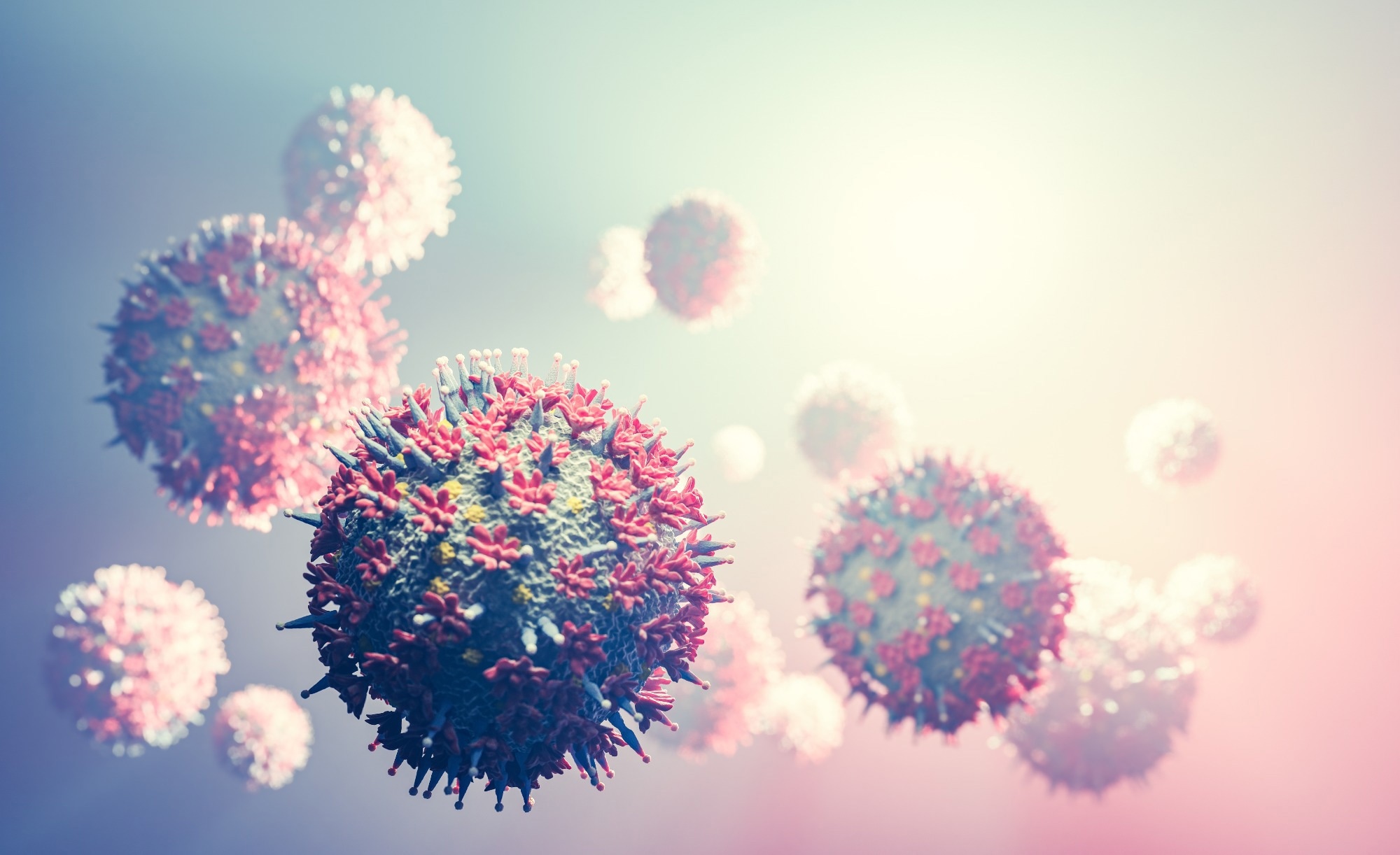In a recent study published in Nature, researchers demonstrated that a severe acute respiratory syndrome coronavirus 2 (SARS-CoV-2) protein functions as a histone mimic to disrupt the epigenetic regulation of host cells.
 Study: SARS-CoV-2 disrupts host epigenetic regulation via histone mimicry. Image Credit: PHOTOCREO Michal Bednarek/Shutterstock
Study: SARS-CoV-2 disrupts host epigenetic regulation via histone mimicry. Image Credit: PHOTOCREO Michal Bednarek/Shutterstock
Recent evidence indicates that infection with SARS-CoV-2 suppresses innate immune responses and disrupts epigenetic regulation. However, it remains unknown how this occurs. Rarely, other virulent viruses may interfere with epigenetic regulation by mimicking host proteins, particularly histones. Histones wrap DNA into complex structures and regulate access to the genome.
Histones undergo a spectrum of post-translational modifications (PTMs), which are dynamically regulated for gene expression control. Histone mimicry enables viruses to disrupt the ability of cells to respond to infection and regulate gene expression. Nonetheless, histone mimicry by coronaviruses (CoVs) has not yet been validated.
The study and findings
The present study investigated whether SARS-CoV-2 employs histone mimicry to impair chromatin regulation and infection response. First, the researchers performed a bioinformatic comparison of SARS-CoV-2 proteins with human histones. There was an identical match of six residues between amino acids 50 – 55 of the open-reading frame 8 (ORF8) and the critical regions in the N-terminus of the H3 histone.
These residues lie in a disordered region on the surface of monomeric ORF8. Intriguingly, the ARKS sequence was found within this motif, which is present in the H3 tail at two different sites. Proteomic characterization revealed DNA methyltransferase 1 (DNMT1) as the binding partner of ORF8.
Next, the intracellular localization of ORF8 was investigated to explore if it functioned as a histone mimic. HEK293T cells were transfected with a Strep-tagged construct encoding ORF8, which was visualized using a fluorescent probe. Immunofluorescence revealed that ORF8 was typically localized to the cytoplasm and nuclear periphery.
However, cell fractionation indicated it was located in both the nucleus and cytoplasm. Further, the team found that ORF8 was colocalized with lamins B1 and A/C in transfected cells. The expression pattern was confirmed in the SARS-CoV-2-infected A549 cell line expressing angiotensin-converting enzyme 2 (ACE2). Next, chromatin binding was assessed using increasing salt concentrations. ORF8 dissociated from the chromatin fraction at similar salt concentrations as lamins and histones.
In contrast, deletion of the ARKSAP motif in ORF8 (ORF8ΔARKSAP) allowed it to dissociate at lower salt concentrations, implying that the putative histone mimic motif influences the strength of the association between ORF8 and chromatin. Chromatin immunoprecipitation with sequencing (ChIP-seq) demonstrated the enrichment of ORF8 within specific genomic regions, especially those associated with the H3K27me3 modification.
ORF8 was also found to associate with lysine acetyltransferase 2A (KAT2A). ORF8ΔARKSAP was not associated with chromatin proteins, suggesting that the ARKSAP motif enhances the association of ORF8 with chromatin proteins. A targeted mass spectrometric analysis was performed to examine if the histone mimic site is similarly modified as histones. This identified a lysine residue in the proposed mimic site that was acetylated, similar to H3 histone.
Furthermore, ORF8 expression caused a marked decline in KAT2A abundance, while nuclear lamina proteins and lamina-associated heterochromatin levels remained unchanged or increased slightly. Next, the team observed that histone PTMs associated with transcription repression were increased in transfected HEK293T cells that expressed ORF8, whereas those associated with active gene expression were depleted. Specifically, those within the ARKS motif of H3 were highly disrupted.
The assay for transposase-accessible chromatin with high-throughput sequencing demonstrated that ORF8 reduced chromatin accessibility but not ORF8ΔARKSAP. RNA sequencing was performed to define differentially expressed genes (DEGs) in transfected cells. ORF8 and ORF8ΔARKSAP shared a subset of DEGs, but the presence of the histone mimic motif resulted in less dynamic changes in gene expression.
Genes downregulated in response to ORF8 relative to ORF8ΔARKSAP had greater chromatin accessibility and higher basal levels of the H3K9ac modification than upregulated genes. Next, a mutant SARS-CoV-2 lacking ORF8 (SARS-CoV-2ΔORF8) was generated; A549ACE2 cells were infected with this mutant or SARS-CoV-2 to compare viral genomic levels and the production of viral particles.
There were no differences in the viral titers or genome copy number at 24 hours, and only minor changes were evident at 48 hours. SARS-CoV-2 infection caused robust increases in repressive histone PTMs (H3K9me3 and H3K27me3). Conversely, this effect was attenuated in the absence of ORF8.
Further experiments with a mutant SARS-CoV-2 where the ARKSAP motif was deleted from ORF8 (SARS-CoV-2ΔARKSAP) revealed a substantial attenuation of the effects of infection on H3K9ac and chromatin accessibility, replicating the effects of ORF8 deletion. Infection with wildtype SARS-CoV-2 decreased KAT2A expression, whereas SARS-CoV-2ΔARKSAP or SARS-CoV-2ΔORF8 infection did not.
Finally, induced pluripotent stem cell (iPSC)-derived lung alveolar type II (iAT2) cells were infected with wildtype and mutant SARS-CoV-2s. The genome copy number of mutant viruses was reduced 48 hours post-infection, implying that ORF8, particularly the ARKSAP motif influences viral replication. Viral particles generated by the ΔORF8 mutant were lower than the wildtype virus. In contrast, the ΔARKSAP mutant appeared similar to wildtype SARS-CoV-2, implying that ORF8 has an ARKSAP-independent function of viral particle generation.
Conclusions
The study demonstrated that the SARS-CoV-2 ORF8 contains an ARKS motif and that the expression of ORF8 disrupts the regulation of histone PTMs. The researchers found the association of ORF8 with chromatin-associated proteins, nuclear lamina, and histones. Similar to histones, ORF8 undergoes acetylation within the histone mimic motif.
Deletion of ORF8 caused a reduction in viral replication in iAT2 cells, whereas the viral genome copy number was explicitly affected by the loss of the histone mimic motif. Overall, the researchers identified a new case of histone mimicry during SARS-CoV-2 infection and described mechanisms by which the virus disrupts the chromatin regulation of host cells.